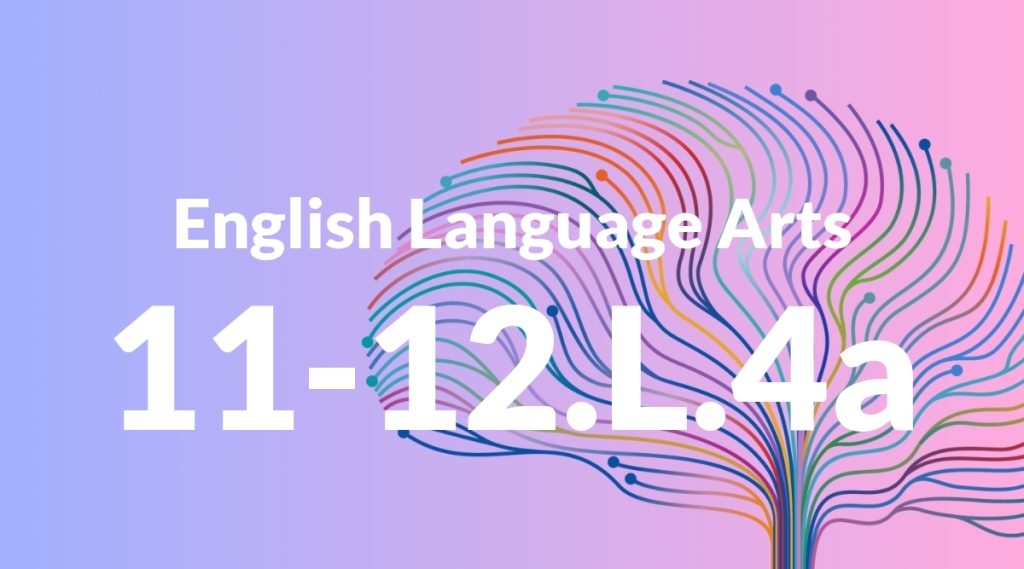Standard: 11-12.L.4a – Use context (e.g., the overall meaning of a sentence, paragraph, or text; a word’s position or function in a sentence) as a clue to the meaning of a word or phrase.
Grade level: Grade 11-12
Subject: English Language Arts
Domain: Language
Teacher Overview
This standard emphasizes the importance of using context to determine the meaning of unfamiliar words or phrases. It is crucial for students to develop this skill as it enhances their reading comprehension and vocabulary, which are essential for academic success in all subjects. Students should be comfortable with basic sentence structures and parts of speech. They should also have some experience in using context clues in simpler texts before tackling this standard.
Mastering this standard will enable students to use context clues more effectively, enhancing their ability to understand complex texts and infer meanings, thereby improving their overall reading comprehension and vocabulary.
Common Misconception 1
A common misconception is that context clues are only found in the sentences immediately surrounding an unfamiliar word. This is incorrect because context clues can be spread throughout a paragraph or even an entire text.
Intervention 1
To address this misconception, provide students with exercises that require them to look at the overall meaning of a paragraph or text to find context clues, rather than just the sentences directly before and after the word.
Common Misconception 2
Another misconception is that context clues always give a direct definition of the word. In reality, context clues often provide hints or related information that help infer the meaning.
Intervention 2
To remediate this, teach students to recognize different types of context clues, such as synonyms, antonyms, explanations, and examples, and practice using these clues to infer meanings.
Prerequisite Knowledge
Students should have a basic understanding of sentence structure, including subjects, verbs, and objects. They should also be familiar with parts of speech and have experience in reading comprehension strategies.
Subsequent Knowledge
After mastering this standard, students will be able to apply context clues more effectively to understand complex texts. They will also develop a richer vocabulary and improve their ability to infer meanings in various reading materials.
Instructional Activities
- Create a scavenger hunt where students find and interpret unfamiliar words in a text using context clues.
- Have students work in pairs to write sentences with unfamiliar words and exchange them with another pair to decipher using context.
- Use excerpts from various genres (e.g., fiction, non-fiction, poetry) and have students identify and explain the meaning of unfamiliar words using context clues.




